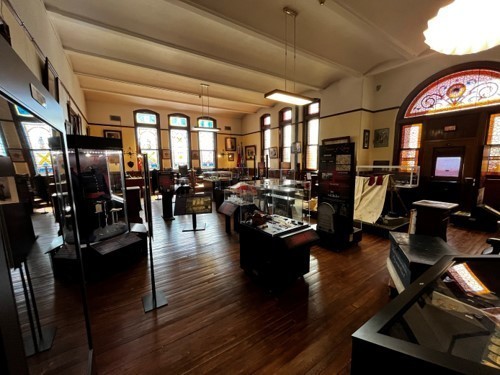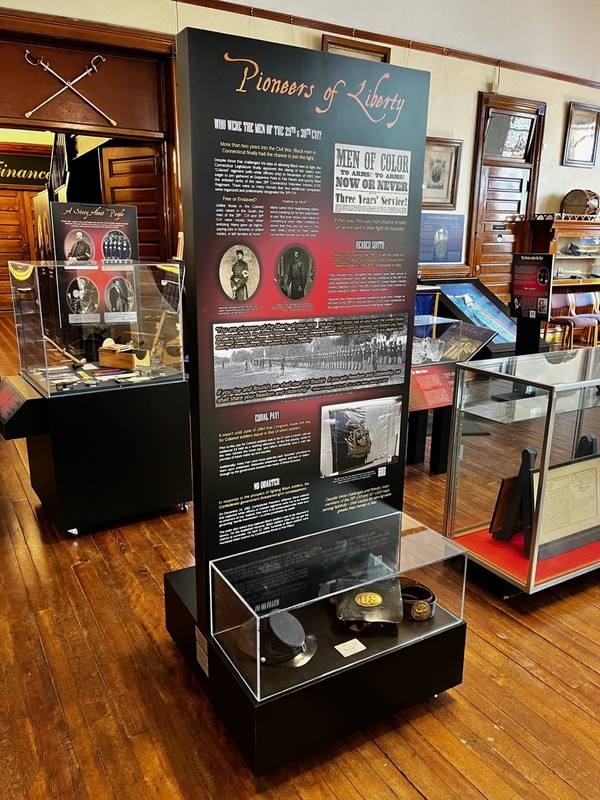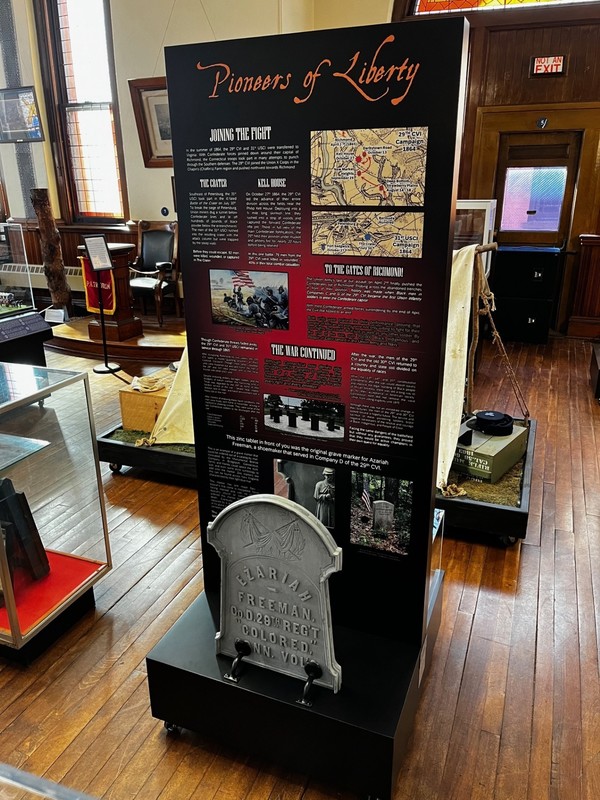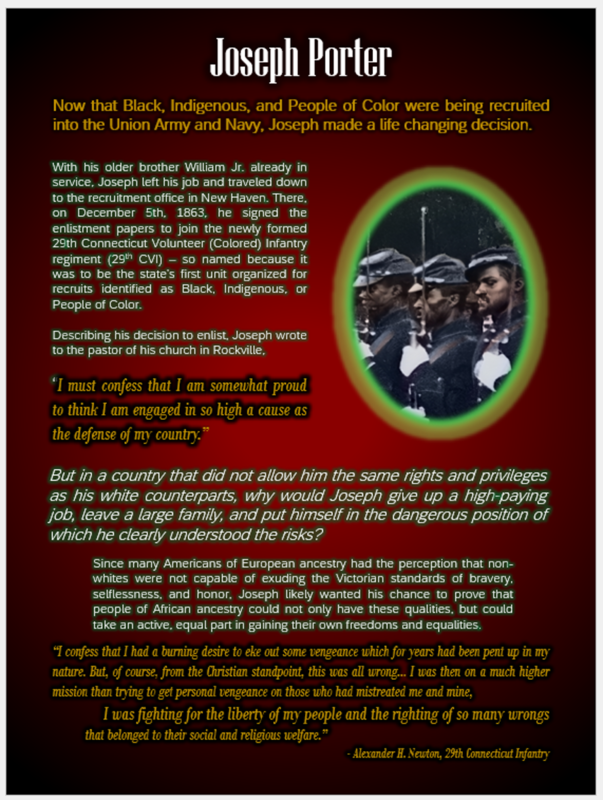The New England Civil War Museum in Vernon had been added to the Connecticut Freedom Trail, which commemorates the fight for emancipation from slavery and honors African Americans who paved the way for future generations in the struggle for freedom and equality.
The museum, located on the second floor of Vernon Town Hall, is staffed by a dedicated group of Civil War historians who have for years sought out the stories of those who participated in America’s bloodiest conflict and fought to free 3 million enslaved people. It is open 10 a.m. to 3 p.m. Saturdays and Sundays, and Fridays 10 a.m. to 1 p.m. in the summer.
The museum’s acceptance into the Connecticut Freedom Trail came after two years of work by museum staff to reshape the museum’s interpretation of the Civil War. The museum team enlisted the help of two leaders in the raising of voices and stories of African American heritage in Connecticut, John Mills of Alex Breanne Corp., and Tammy Denease of Hidden Women, LLC to authentically and respectfully compose the exhibit narratives. Funding for the project was provided by a competitive grant from CT Humanities.
 Interior of the New England Civil War Museum.
Interior of the New England Civil War Museum.
Visitors to the museum will find a tour narrative that conveys the experiences of ordinary people during the Civil War in a personal, emotional manner. The main tour, "Seth, Joseph, Lizzie, and George," follows Joseph Porter, a young textile mill worker who joins the 29th Connecticut Volunteer "Colored" Infantry Regiment, from Rockville to Bermuda Hundred in 1864. Through letters with his mother, Mary Dolphin Porter, we gain insight into the war from his hopeful yet human perspective.
Joseph's story is intertwined with that of his brother William, who was conscripted before Black soldiers were legally allowed to join Connecticut's muster rolls. Serving with the 14th Rhode Island in Louisiana, the war takes a heavy toll on him, as it does on Joseph in Virginia. After the war, we learn about Azariah Freeman, who served with Joseph and later settled in New London County, and Henry M. Forrest Brewster, a veteran of the 55th Massachusetts and member of the Grand Army of the Republic post that met in what is now the museum’s space.

The museum tour aims to present the war through two crucial perspectives. First, it emphasizes the shared humanity of these individuals, whose emotions, hopes, and fears transcend race and time. Equally important is the context of their experiences—volunteering their lives for rights they could only hope to achieve in a country that did not yet see them as equals. While their experiences were universal, their motivations were unique.
“We tell the story of the everyday men and women of the Civil War period, its impact on their lives, the cataclysmic events that claimed more than 620,000 American lives, and the destruction of the institution of slavery,” museum Executive Director Daniel Hayden said. “The museum now gives a more complete representation of the range of people from Connecticut and New England that experienced the Civil War. Hopefully, everyone will be able to identify with the stars of our show at the museum.”
The museum is located in the former meeting place of a Grand Army of the Republic post in Vernon and offers a unique opportunity to learn about and connect with the diverse individuals who lived during the American Civil War era. The tour and exhibit narrative includes the varied personal perspectives of soldiers, women, and civilians who experienced the war. The stories of people of African ancestry are prominently featured to provide both comparable and contrasting views into the human experience. African American soldiers, sailors, and civilians from Connecticut made significant impacts on the course and meaning of the American Civil War and the concept of freedom, facing unique challenges that are honestly represented in the tour's overall message.

Another museum exhibit focused on the Black soldiers of African ancestry who served in the 29th and 30th Connecticut Volunteer “Colored” Infantry regiments. Titled "Pioneers of Liberty," after a phrase used by Frederick Douglass in speaking to the 29th Connecticut before it left the Fair Haven section of New Haven for the front, the exhibit repurposes an existing display fixture to highlight the historiography of the 29th and 30th, including the specific challenges those men faced during and after the war.
“Another important theme of the exhibit is that African Americans held a strong sense of agency in determining the destiny of their heritage, joining and contributing to the Union's effort in winning the Civil War, despite the lack of follow-through from the country after the war,” Hayden said. “The connection between people of today and the humanity of the tour subjects will be what visitors remember from their visit, and hopefully carry with them in understanding their place in the world today.”

The museum joins other sites in Vernon on the Connecticut Freedom Trail, including the Porter family plot in Grove Hill Cemetery, and Charles Ethan Porter's house, the younger brother of Joseph, who became a famous artist of still life and has one work owned by the Smithsonian American Art Museum.
For additional information about the New England Civil War Museum, please visit its website, newenglandcivilwarmuseum.com, or Facebook page @necivilwarmuseum.

